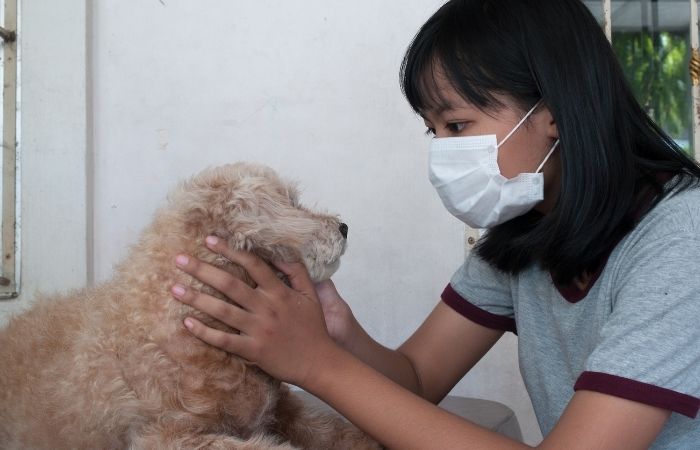Dog allergy symptoms are often overlooked by pet owners as being inconsequential. If you are a dog owner and want to know more about how to help your dog manage its allergies, then this article is for you.

Dogs are man’s best friend. There’s nothing quite like a well-trained, lovable dog. Dogs can be a wonderful part of the family, but they also come with risks and dangers of all kinds. Some allergens cause a severe reaction, but there are some that are much more mild.
However, the fact remains that most dogs contain substances that can trigger a severe allergic response. Here’s what you need to know about allergies and dog allergens so you can make sure that your dog remains hypoallergenic.
There are certain dog breeds that are prone to develop allergies. And, there are ways you can help reduce the allergen exposure and prevent dogs from developing such allergies. In this article, you will learn about the main causes of canine allergies and the steps to take to keep your puppy allergy free.
Related: Food for Allergenic Dog
Understand Dog Allergens
We all love our dogs, but allergies are something that everyone should be aware of. Dog allergies can be a very serious matter for your dog. They can cause them to become lethargic, runny nose, and even develop red, irritated skin. Allergy season can last anywhere from six weeks to several months, and many people find themselves dealing with their furry loved ones through the summer.
Determine Dog Allergens
It’s important to be mindful of what your dog is allergic to. A lot of people get off track by trying to get their dog to stop reacting to a certain thing. If they stop eating it, they feel like their dog is happy and that means he or she has stopped being allergic. But really, the allergy has simply moved to something else. So, if you’re looking to address a specific problem, start with the basics, such as diet, environment, and exercise.

There are a lot of things that your dog could be allergic to. One example would be dust mites. They are very small, so you wouldn’t normally see them. However, if your dog keeps his nose pressed up against the floor, it’s quite possible that he’s breathing in dust mites. So, you should take him outside to play. You should also make sure that your dog isn’t around any dust. If he’s in a house with carpeting, you should make sure that it’s clean. A dog will always breathe in dust if there is dust in the air.
And if you’re worried about other allergens, such as pollen, you should take your dog to the park or to a place where there is grass. If he eats grass, he will be exposed to pollen. Another example of a thing that dogs can be allergic to is the food that they eat. If your dog has been eating a certain food, you need to change it immediately. If you don’t do this, your dog may have an allergic reaction to it.
How To Keep Your Dog Safe From Dog Allergens

You can see that dogs have many allergies just like humans do. This is because the two share many of the same triggers and allergens, such as pollen and dust.
So when you’re looking to avoid allergy season for your dog, you need to look for products that can help him or her stay healthy throughout the year. There are also many types of medications and treatments available to keep your furry friend safe.
One of the most common ways to treat an allergic reaction in your dog is to use antihistamines. These medicines are safe for both you and your pet. Check on Amazon.
The best way to avoid an allergy attack is to use products that will protect your pet from the allergens and allergens in his or her environment.
The best way to prevent a problem is to keep your dog indoors during pollen season.Your dog needs to be protected from the pollen that’s floating around outdoors. It may be a bit annoying to have your dog confined to one room, but it’s better than having him or her breathing in the stuff that’s causing the problem. You can also clean your home to avoid the problem.
When you’re cleaning, make sure you don’t vacuum with the machine or sweep with a broom when the weather is bad. This will help to prevent pollen from blowing into the house and sticking to everything in your home. You can also use products that will help to eliminate the airborne pollen in your home.




